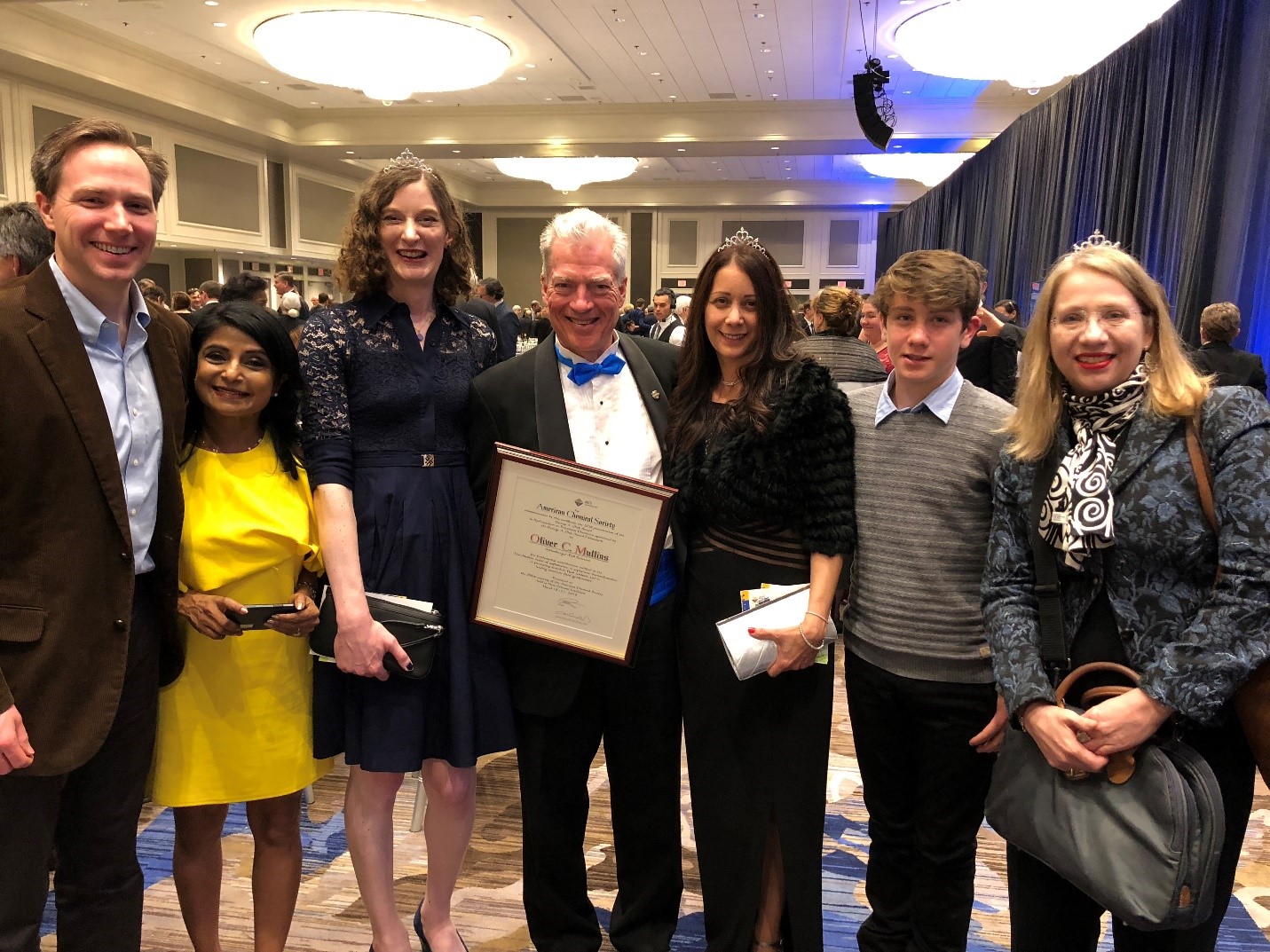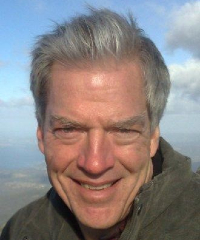In the Shoes of a Schlumberger Fellow
I have had the pleasure of working in Schlumberger for the past 34 years and I have been in the oil industry longer than that if I count my high school summer job of cleaning and painting surface equipment. I have always loved the oil industry and to this day, I still marvel at the earth science mysteries we uncover in our reservoir studies. I am also proud of the oil and gas industry for its tremendous scientific and technical achievements and for its innately inclusive and enjoyable approach of accumulating contributors from all backgrounds. The oil industry is a model for all others in achievement and approach to human capital. Schlumberger, in particular, has been a guiding light even when navigating recent extremely difficult times.
I have been very fortunate to be recognized for my own contributions especially in recent years with several high-profile awards given by five different organizations as well as being named Schlumberger Fellow. I am greatly satisfied that these awards span my diverse interests of logging technology, reservoir understanding and chemistry. My father was a famous physicist who won numerous awards. He told me after a few awards rolled in, he became a ‘safe’ choice for award committees, and more awards followed. I think I have achieved the ‘safe’ status. I readily acknowledge that indeed I have become a symbol for the achievements of an army of skilled technologists within Schlumberger and across the industry. I take great comfort in the expressions of many in Schlumberger to me that they take pride in these awards; we collectively own them.

A question naturally arises, what factors led to this success? Young people, who only see the last stages of this process, can form the misunderstanding that these awards meant that I had smooth sailing throughout my career which then led to broad recognition. In fact, the opposite is much closer to reality. As I see it, I have had three primary contributions, downhole fluids analysis (DFA), advances in asphaltene science and reservoir fluid geodynamics (RFG). Each development takes 10 to 12 years to evolve from “we don’t need that” or “that can’t be right” to “obviously, everybody uses that” or “what’s the big deal, everybody knows that”. Both DFA and our asphaltene science have run full course achieving widespread acceptance. RFG is still evolving perhaps in year seven, and is on a good trajectory, but more hard work is required to bring RFG to fruition. Both the technical advances of DFA and the scientific asphaltene advances from my lab generated huge resistance in respective communities. In contrast, when we launched RFG, a later development in my career, I had developed a sufficient reputation, and the vision was sufficiently strong that we did not face strong resistance to these new concepts. Part of that reputation is that I am no fun to argue with as confirmed by all family members. Nevertheless, the challenge remains for RFG to get the industry to improve its workflows and this during an extended downturn.
“Who needs downhole gas oil ratio (GOR)? The PVT lab report will have more numbers in it than the New York City phone book. What am I going to do with one number from you?” This was the customer attitude routinely expressed when we first introduced DFA. No interest. Now, of course, DFA is utilized industry wide and our competition all have DFA services although not nearly the quality of ours. We had to have a trick to jump start DFA. We used GOR and oil color measurements (imparted by asphaltenes) along with the OCM algorithm (my initials confuse the origin of this acronym) to quantify oil-based mud (OBM) contamination during sampling. In this process, we found early on that GOR and asphaltenes were useful attributes to characterize reservoirs. Nevertheless, at one point, there was a serious proposal in Schlumberger to simplify DFA only for sample clean up. I forcefully made the case that DFA measurements needed to be expanded for reservoir characterization even though I could not specify exactly how at that time. Schlumberger management made the call to support our effort and 55 RFG oilfield case studies is the result. The efficiency, accuracy and automation of the Ora intelligent wireline formation testing platform make RFG evaluation facile promising a bright future.
Likewise, in asphaltene science, there were also strong headwinds. There was a prevailing view amongst chemistry leadership in the field that asphaltenes were comprised of giant, polymeric molecules. In chemistry molecular weight cannot be more fundamental, size counts. In a series of studies, my students performed the first molecular diffusion measurements of asphaltenes and showed that these are actually small molecules. The debate was very heated and personally difficult; a shouting professor actually publicly threatened me with a lawsuit over asphaltene science! Having survived an infringement suit we won against Baker, I wasn’t too worried, but the acrimony was over the top.
After this controversy was resolved in my favor, the controversy shifted to molecular architecture. This debate also resolved in our favor as proven by collaborations with Professor Zare at Stanford U (Drew Pomerantz’ PhD advisor). More recently, world leaders in molecular imaging at IBM Zurich (where scientist were awarded the Nobel Prize for invention of the imaging methods) provided confirmation of our results in collaborations with ExxonMobil, Shell, and Chevron. To add insult to injury, my students showed with high-Q ultrasonic spectroscopy that then prevailing aggregation thresholds of asphaltenes were wrong by a factor of 20. I was not popular. But I was and am highly cited. I will take citations over popularity. As many of my adversaries retire or otherwise disappear, I suppose I am thus becoming more popular.
These hopefully entertaining stories are meant to convey what I consider essential to a successful journey in science and technology. The first requirement is an overarching commitment to scientific and technical excellence, there is no substitute. It is required to know what data and interpretation to believe especially when confronted with conflicting assessments. Sometimes, leadership in a field can have opaque motives, it is important to know whom to believe as well. I always had a portfolio of projects with different timelines with some short timelines and others much longer term. I always wanted clarity in the business model for projects hitting the field.
Ideally, the projects should exist at the overlap of how Schlumberger makes money and how our customers make money. Reservoirs evaluation via downhole measurements is a nice home for me. Keep an open mind to recognize opportunity, tackle some big problems even if their resolution will take a while. I note that our group developed the industry’s first equation of state to model asphaltene gradients in reservoirs, but it took me 25 years! The asphaltene nanoscience is what took all the time. It is required to have the courage of your convictions and to face the adversity that new ideas almost invariably encounter. It is highly desirable to find kindred spirit and work together to create something big. Consider what is in the best interest of those who choose to work with you. In fact, I have been a shameless poacher over the many years. And don’t be afraid to learn something new.
The oil industry lives in the interface and many disciplines, and many advances will be interdisciplinary. I walk the talk, I am trying to amalgamate rock and fluids within the geodynamics context. We are making advances, and it is great fun. And that is important, don’t forget to have fun, even in the difficult times.
Author information: Dr. Oliver C. Mullins is a Schlumberger Fellow and member, U.S. National Academy of Engineering. He is leading the newly codified discipline, “reservoir fluid geodynamics” (RFG), the subject of his latest book, which accounts for fluid compositional redistribution and phase change during and post charge. RFG utilizes Downhole Fluid Analysis (DFA) and asphaltene thermodynamics for novel reservoir evaluation. He led the inception and development of DFA in well logging as described in his previous book. Dr. Mullins work in petroleum science led to the Yen-Mullins model of asphaltenes and the Flory-Huggins-Zuo Equation of State. He coedited 3 books and coauthored 15 chapters on asphaltenes and related topics. He has coauthored 285 publications and has coinvented 135 allowed US patents. He has won several awards including the SPE Reservoir Description and Dynamics Award, the SPWLA Gold Medal for Technical Achievement, the George A. Olah Award in Hydrocarbon or Petroleum Chemistry from the American Chemical Society and the 1st ADIPEC Lifetime Achievement Award for Outstanding Technical Excellence to the Oil and Gas Industry. He is Fellow of two professional societies and is Adjunct Professor of Petroleum Engineering at Texas A&M University.

